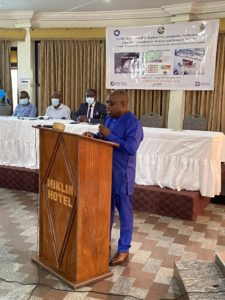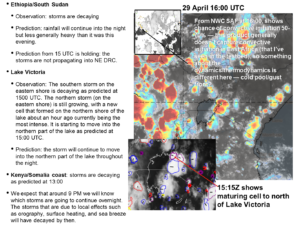Using positive land surface temperature anomalies to predict the location of convection in Niger
Patterns of soil moisture, observed by satellite, are helping us to pinpoint the locations where thunderstorms will form. Testbed 3 is pioneering the use of these land surface observations as part of the process of ‘nowcasting’ for the Sahel zone in Africa. Nowcasting refers to a forecasting process where we provide short-term predictions of severe … Continue Reading





